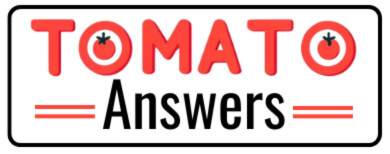Will Drones Become the Future of Tomato Farming?
Drones have traditionally been associated with military operations, serving as unmanned aerial vehicles for surveillance and even offensive strikes. However, their applications are rapidly expanding into various civilian sectors, including agriculture.
Pilotless drones, once solely the domain of armies and intelligence agencies, could soon find a new role in helping farmers boost food production, particularly in the realm of tomato farming.
The Perception of Drones
The popular perception of drones is that of expensive, high-tech military hardware designed for spying or offensive operations. This image is deeply ingrained in the public consciousness, thanks to their widespread use in modern warfare and counterterrorism efforts.
However, this perception is gradually shifting as robots and autonomous systems become increasingly integrated into our everyday lives. Agriculture, a vital sector responsible for feeding the world’s population, is emerging as one of the new frontiers for drone technology.
The Rise of Precision Agriculture
As food production becomes more automated, incorporating technologies such as GPS-guided tractors and automated milking machines, drones are starting to play a role in what is known as precision agriculture. This approach involves using advanced technologies to optimize crop yields, reduce waste, and increase efficiency.
In this context, drones are being used to survey crops and provide farmers with valuable data to help them manage water usage, fertilizer application, and pest control across vast fields.
By collecting aerial imagery and sensor data, drones can pinpoint areas requiring attention, allowing farmers to target their resources more effectively.
A Pioneer in Agricultural Drones: Chris Anderson
One of the pioneers in the field of agricultural drones is Chris Anderson, the former editor-in-chief of Wired magazine.
After a successful career in technology journalism, Anderson switched gears and co-founded 3D Robotics, a company dedicated to manufacturing drones for various applications, including farming.
3D Robotics is at the forefront of developing drones specifically designed for precision agriculture. Their drones, manufactured in Mexico and the United States, are equipped with high-resolution cameras and sensors that can monitor crops from above, acting as “beady electronic eyes” on the food being grown.
The BBC’s Future team visited 3D Robotics’ workshop in San Diego, California, to witness firsthand the potential of these agricultural drones.
The Role of Drones in Tomato Farming
Tomato farming is a prime candidate for the integration of drone technology. Large-scale tomato production requires meticulous management of vast fields, including precise watering, fertilization, and pest control measures. Detecting issues such as pest infestations, disease outbreaks, or areas of poor growth can be challenging when dealing with hundreds of acres of tomato plants.
Drones offer a solution to this challenge by acting as aerial scouts, capable of flying over tomato fields and collecting high-resolution imagery and sensor data. This data can provide farmers with detailed information on the health and growth of every individual plant, allowing them to identify problem areas quickly and accurately.
For instance, if a drone detects a patch of tomato plants exhibiting stunted growth or discoloration, farmers can promptly investigate the cause, whether it’s a lack of water, nutrient deficiency, or the presence of pests or diseases. Armed with this information, they can apply targeted treatments, minimizing the waste of resources and maximizing the yield and quality of their tomato crops.
The Benefits of Drone-Based Precision Agriculture Implementing drones in tomato farming offers several key benefits:
- Early detection of issues: Drones can identify problems in their early stages, before they escalate and cause significant damage to the crop.
- Targeted treatment: By pinpointing the exact areas requiring attention, farmers can apply water, fertilizers, and pesticides precisely where needed, reducing waste and minimizing environmental impact.
- Increased efficiency: Drones can cover large areas quickly, providing a comprehensive overview of the entire crop in a fraction of the time it would take for manual inspections.
- Cost-effective monitoring: While the initial investment in drone technology may be significant, the long-term cost savings from optimized resource usage and increased yields can make it a worthwhile investment.
- Sustainable practices: By minimizing the unnecessary application of water, fertilizers, and pesticides, drone-based precision agriculture contributes to more sustainable and environmentally friendly farming practices.
The Future of Drones in Tomato Farming While the use of drones in agriculture is still in its early stages, the potential for their widespread adoption in tomato farming is significant.
As the global population continues to grow, the demand for food will increase, putting pressure on farmers to produce more with limited resources.
Drones offer a viable solution to this challenge, enabling tomato farmers to optimize their yields while minimizing their environmental footprint.
Companies like 3D Robotics are exploring innovative business models, such as providing drones at low costs or even free of charge, and generating revenue through subscription-based software and data analysis services.
As the technology continues to evolve and become more accessible, it is conceivable that routine “drone checkups” on tomato crops could become a standard practice in the near future.
These aerial sentries could play a crucial role in ensuring a reliable and sustainable supply of tomatoes and other fresh produce for the world’s tables.
In conclusion, while drones have traditionally been associated with military applications, their potential in the realm of agriculture, particularly tomato farming, is immense.
By providing farmers with a cost-effective and efficient way to monitor their crops, drones could become an invaluable tool in the pursuit of increased food production while promoting sustainable practices.
As the demand for fresh produce continues to rise, the integration of drone technology into tomato farming could very well shape the future of this vital agricultural sector.

